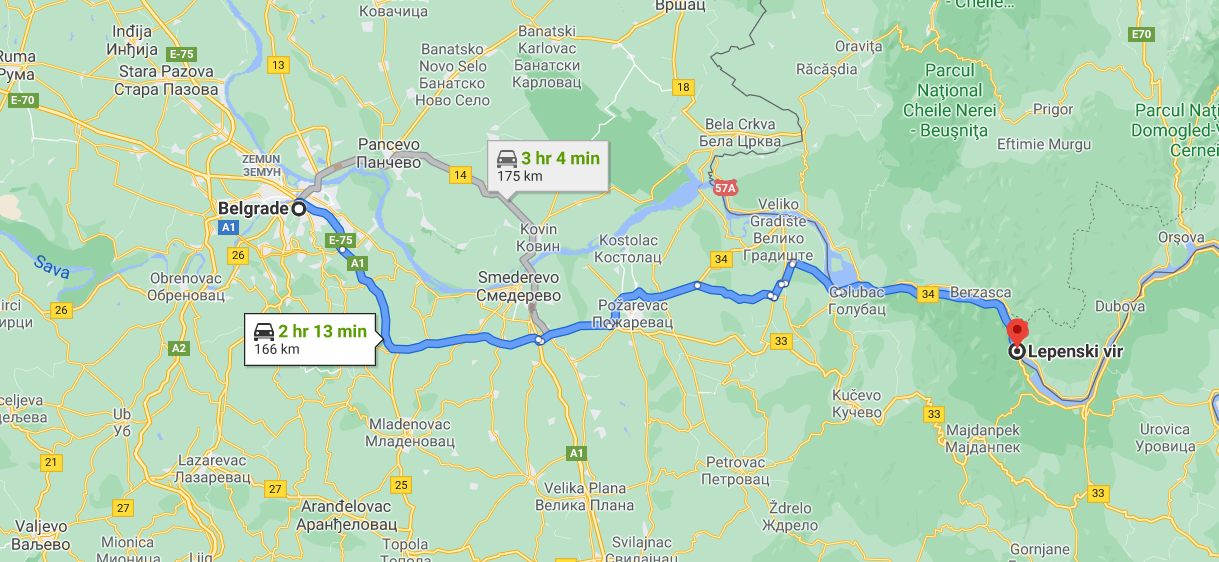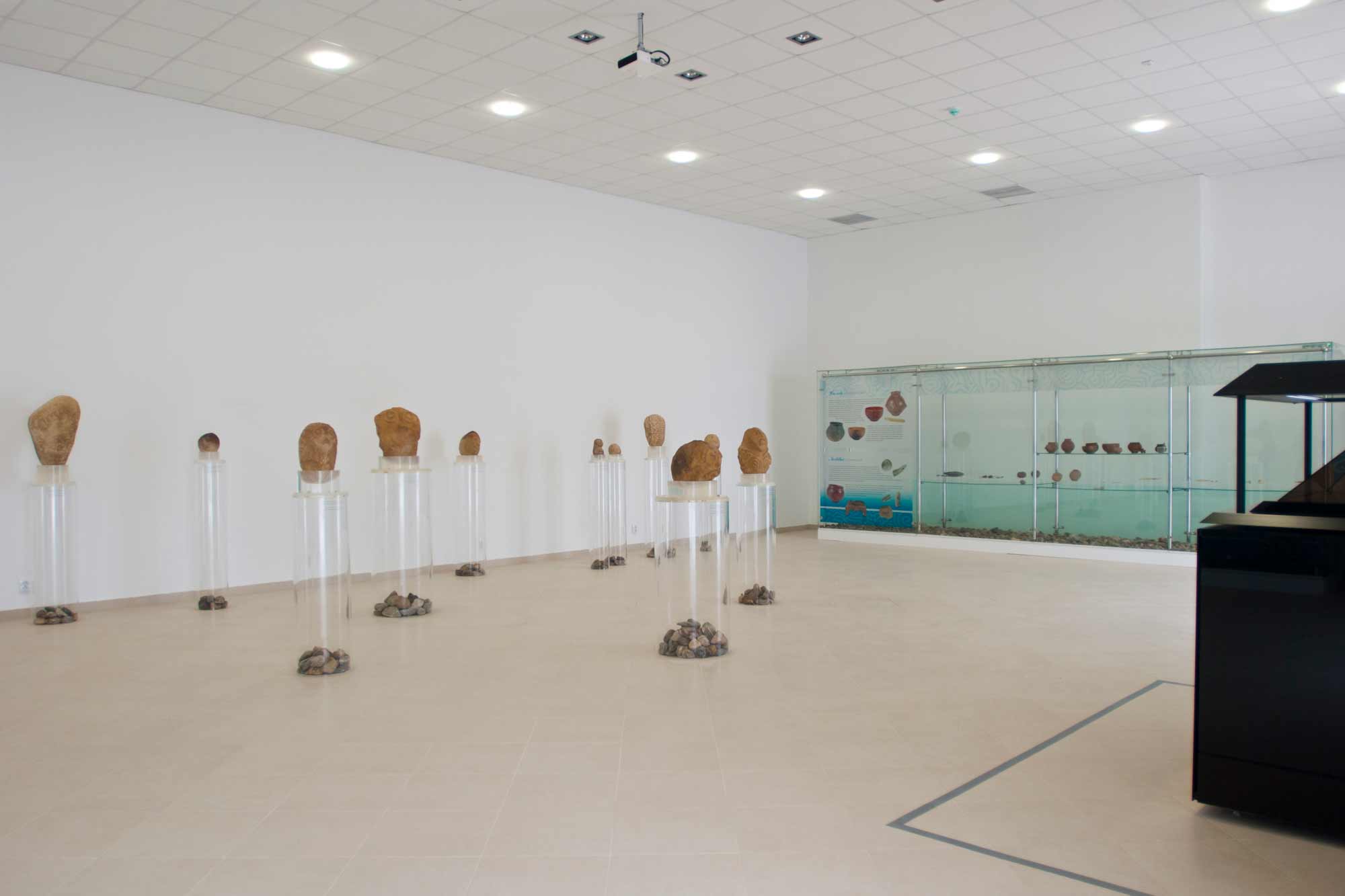Lepenski vir
On the right bank of the Danube, next to the Đerdap gorge, lies one of the most important Mesolithic and Neolithic archeological sites. It spreads through the central part of the Balkan Peninsula. Lepenski vir was named after the Danube whirlpool, which was the center of one of the most important known prehistoric cultures.
Lepenski vir was first discovered as a small fishing village in the period between 1965 and 1970. The discovered remains of a fishing village indicated that it was the beginning of domestication and cultivation. Further research revealed seven more successive settlements with 136 buildings that were built at the very beginning of the Mesolithic in the period from 9500 to 7200 BC. The buildings found at the site were both sacral and residential and were named Proto Lepenski vir 1 and 2.
In addition to buildings from the early Mesolithic, later buildings from the early and middle Neolithic were found, from the period from 6250 until 5500 BC. The sites from this period are called Lepenski Vir I-III.

When was Lepenski vir discovered? Interesting facts of the locality
Extensive archaeological research has been conducted along the right side of the Danube. The research was led by the Archaeological Institute from Belgrade, and the goal was to investigate as many sites as possible and collect as much data as possible before the construction of the "Đerdap Dam":
The team of researchers led by Dr. Dušanka Vucković-Todorović also included archaeologist Obrad Kujović, one of the two responsible for the discovery of this prehistoric site. In August 1960, Obrad Kujović, while researching the sites near Donji Milanovac, together with the then-graduate student of archeology, Mr. Ivica Kostić, found Lepenski vir. It happened just before the end of the expedition, more precisely on August 30, 1960. Obrad was given the task to carry out, together with Ivica, an archeological reconnaissance of the terrain that stretched from the upstream from Donji Milanovac to Dobra.
Interestingly, none of the archaeologists visited the site for about 20 years, so the terrain was extremely impassable and posed a real challenge to the researchers. The discovery happened almost by accident. Breaking through the impassable terrains, Obrad Kujović and Ivica Kostić took a break to refresh themselves with the Danube water. The specific configuration of the terrain near Vir near Lepena attracted the attention of researchers, and Obrad himself noticed fragments of baked earth vessels in the water. According to the researchers, there were so many of these fragments that at first, they thought they had discovered a ceramic workshop.
The collected data and the report from this locality have attracted the attention of other researchers. Special interest arose in the then assistant at the Department of Archeology, Mr. Dragoslav Sredojević, who, during the continuation of research the following year (1961). Mr. Sredojevic wanted to know more about the details of the terrain characteristic of this locality. This is how the first site mapping was approached.
In 1965, Dragoslav Sredojević made an additional effort to secure funding for further research. In the same year, the necessary equipment was procured and for the first time, the research of the site was started with the help of probes. Already the first results gave astonishing results - a new culture was discovered, the site of Lepenski vir was discovered - the largest prehistoric, urban settlement in Europe!

Culture of Lepenski vir
The development of the culture of Lepenski vir is related to the period of about 7000 BC. One of the key factors for the development of this important prehistoric culture is climate change. In addition to climate change, the appearance of the early culture of Lepenski vir and the first settlements was influenced by isolation and a significant increase in the local population.
The founders and creators of the Lepenski vir culture belong to the European population, ie the population of the Late Paleolithic. People from this population are characterized by a mesocephalic head, broad face, and large build. The anthropological type to which the population of Lepenski vir belongs is Brno-Przedmos, ie one of the variants of the Cro-Magnon type.
The remnants of this kind of art testify to how advanced this prehistoric culture was. Numerous remains of objects made of bone and ceramics have been preserved. The items are decorated with sumptuous decorative ornaments. Also, sculptures appear on the sites where shrines were found. The sculptures varied in size and were built into the limestone mass of the floor. The largest sculpture found is 62 cm in size, and the sculptures themselves were made using the stone embossing technique. Carved sculptures were a rarity. The iconography of the sculptures occurs in two forms: human and animal form.
You can see a large collection of objects and sculptures found at the Lepenski vir site in the museum located in Djerdap.

Lepenski vir - the place where the first builders lived
Djerdap Gorge has a very specific terrain. The flowing Danube cannot be separated from the mountain relief, and the altitudes change abruptly from 50 to 800 m. Also, a large number of different microecological habitats can be isolated, so the man could find everything he needed to live in those areas - from the abundance of fish, through various rocks and minerals to wildlife found in forests. All this affected the development of the largest European, urban settlement from prehistory.
For the population of Lepenski vir, we can say that they were the first real builders and urban planners from this area. The houses they built had a wooden structure, covered with leaves and skin and fur of wild animals. They were trapezoidal and each of them had a hearth, as well as altars and sacral stone figures of their deities.
The real architectural endeavors were the construction of the sanctuary. Sanctuaries were built much more precisely than residential buildings. The elements that were also in the residential buildings (fireplace, figures, altars) were built into the solid limestone floor. In addition to the mentioned elements of the interior, there were also some elements of the interior in the sanctuaries, characteristic only for the sanctuaries. Namely, triangular elements, elongated arms, composed of chemical plates also appear in the sanctuaries. These elements were built into the walls next to the fireplace. Further research has shown that the method of production based on limestone masses was abandoned in the later stages of the culture of Lepenski vir.












